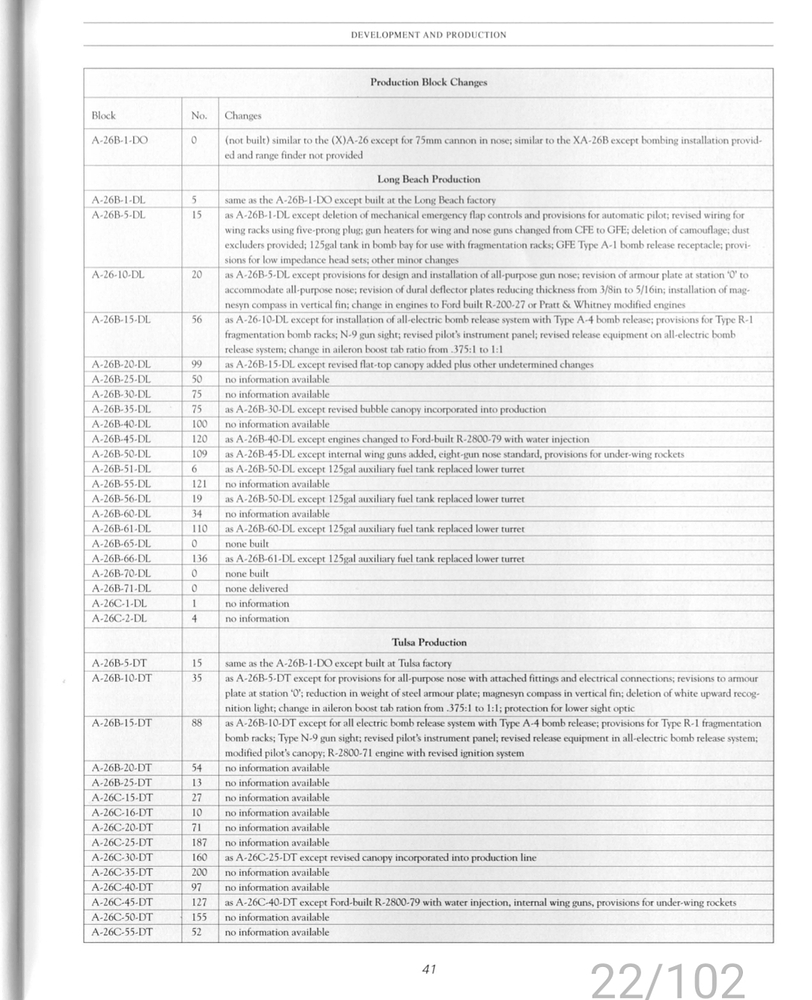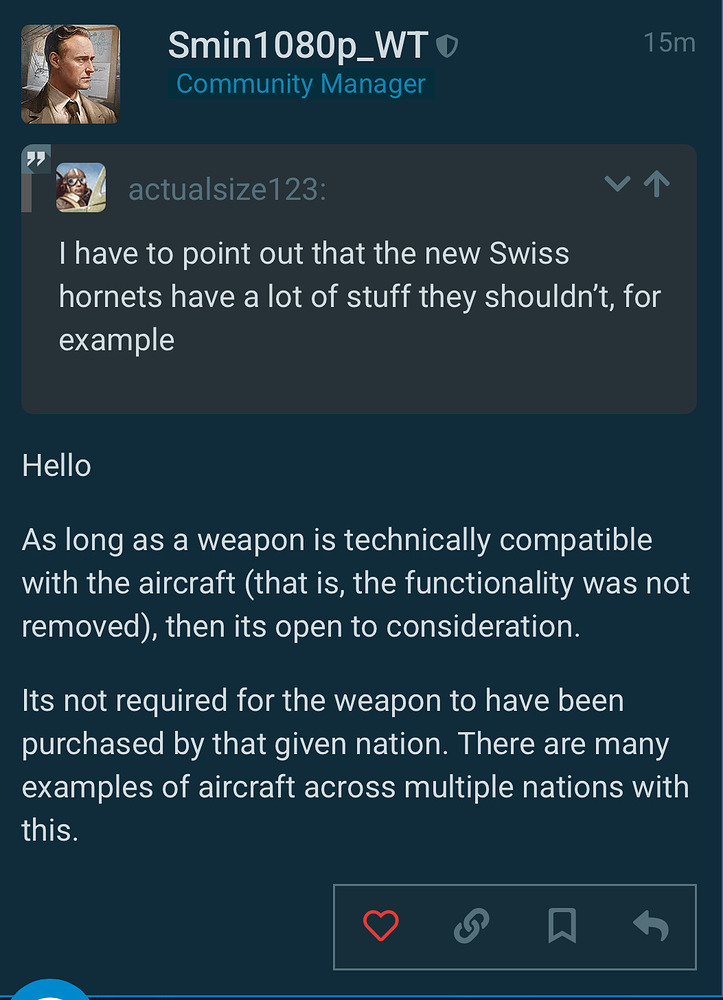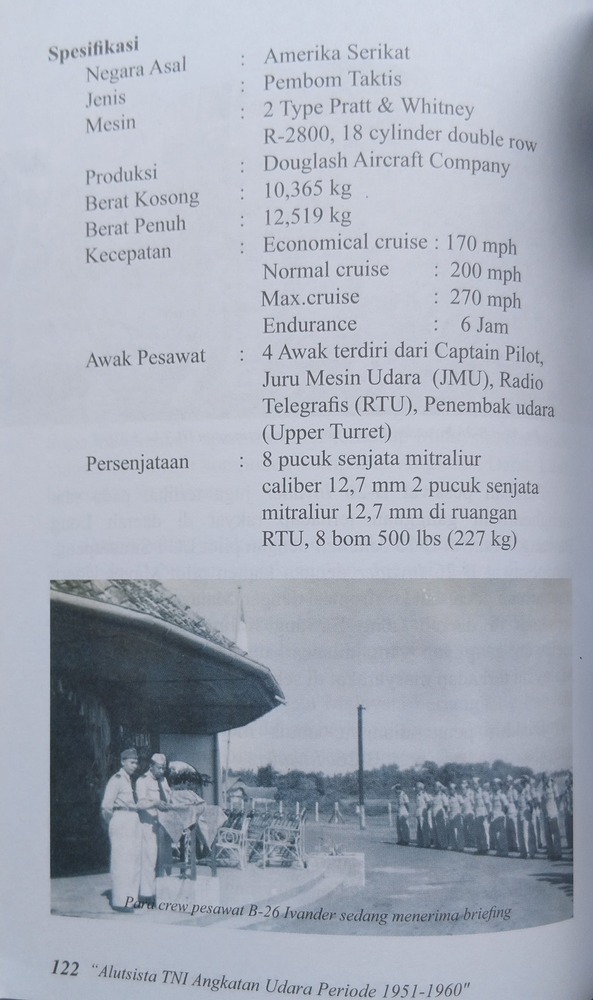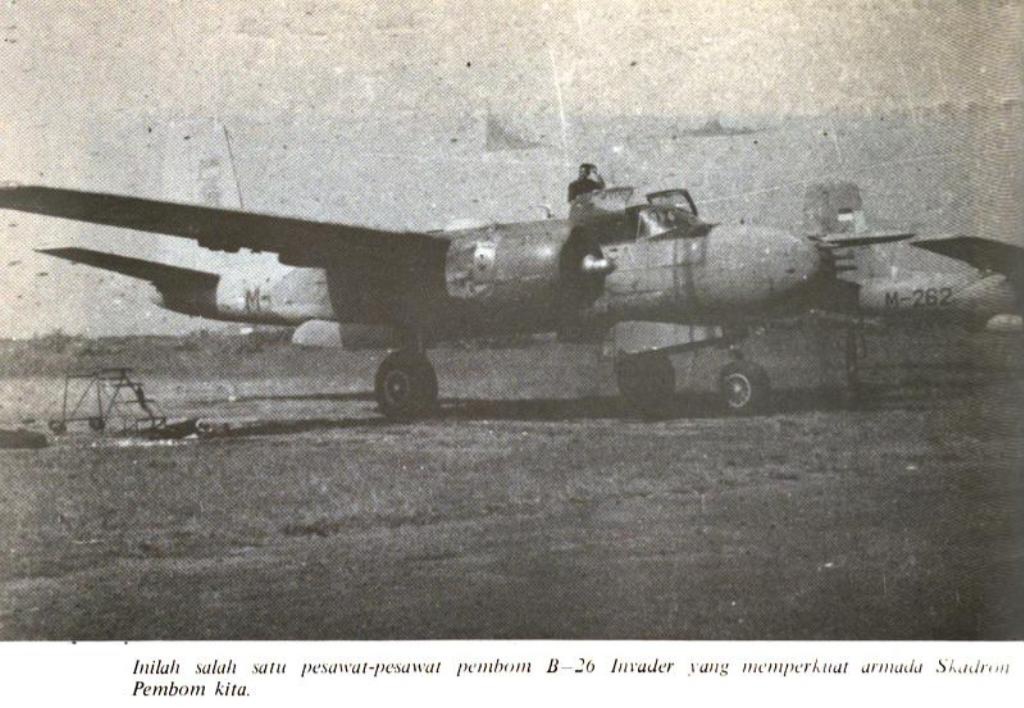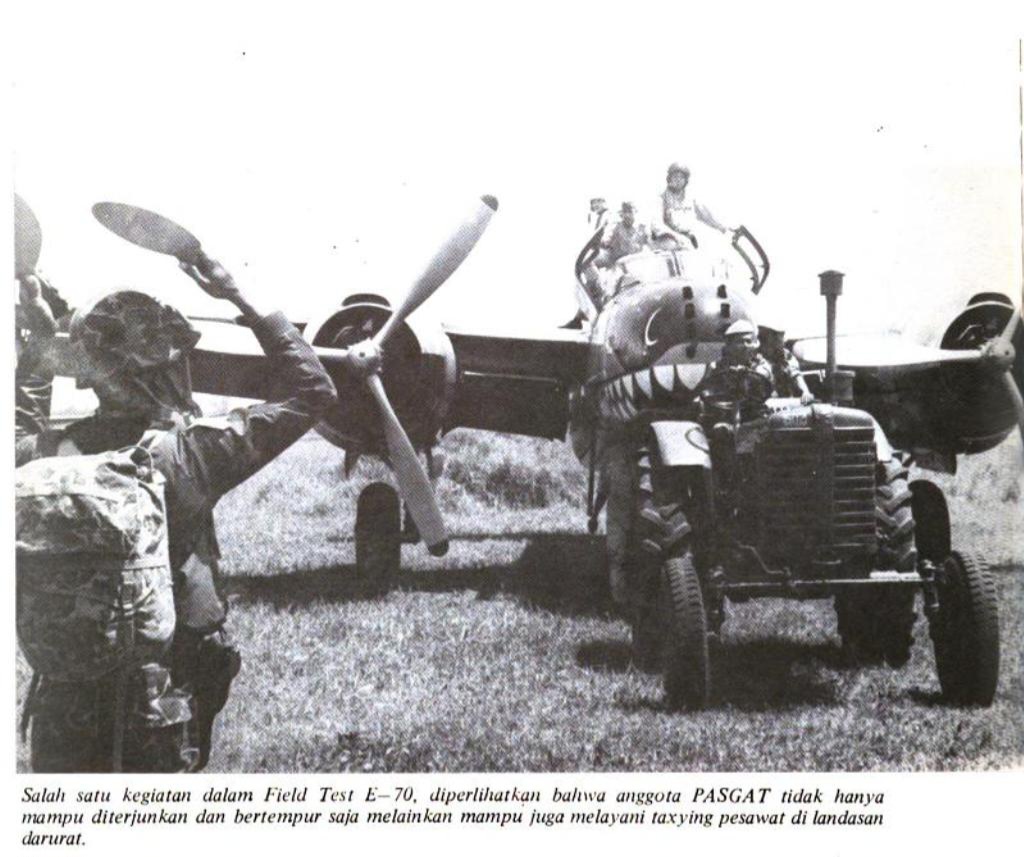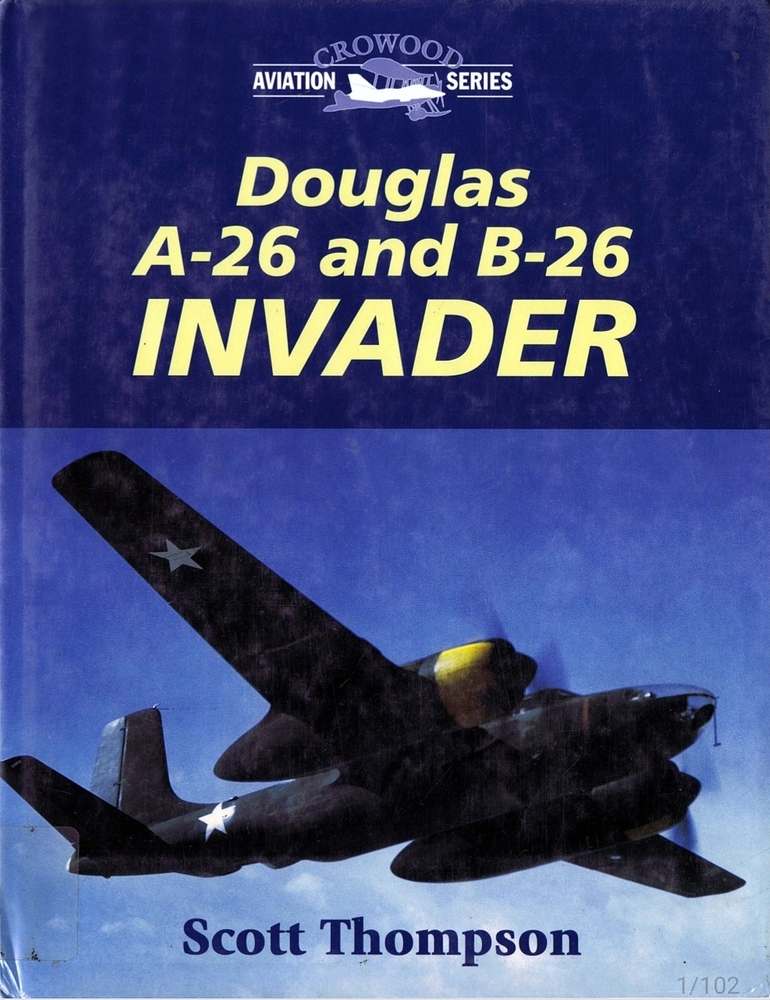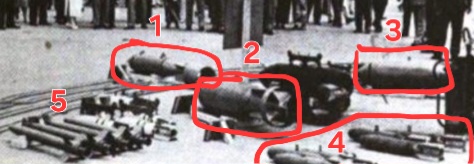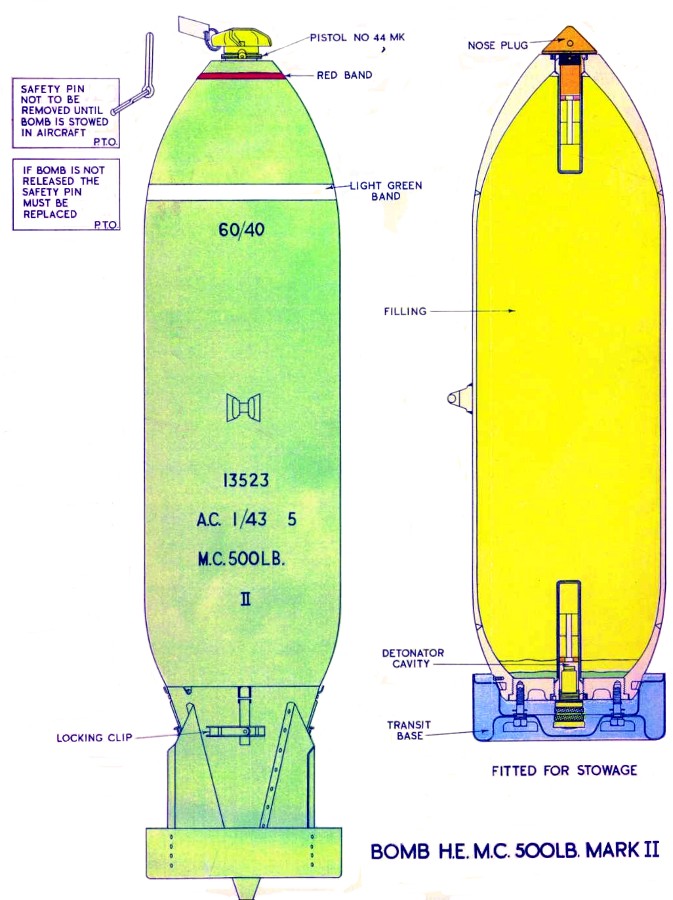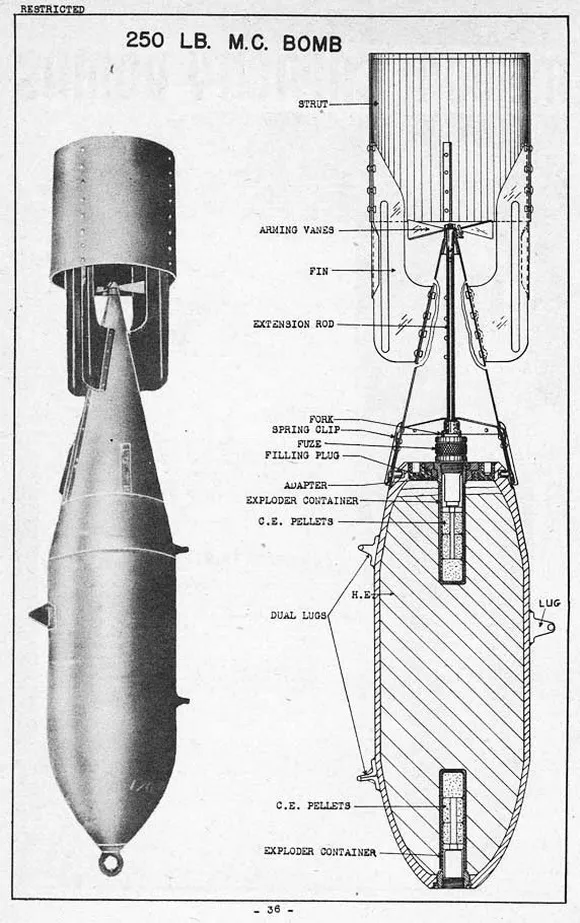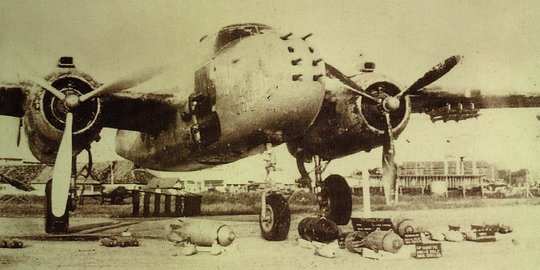- Yes
- No
Hello, I would like to suggest the Douglas B-26B Invader in service with the Indonesian Air Force.

The B-26B Invader entered Indonesian Air Force service in 1960, and they were used extensively until retired in 1977. During their last combat tours in East Timor (1975-1977), the B-26B flight were given the radio callsign “Kalong”, meaning fruit bat in Indonesian. Indonesia is the last operator of combat-ready B-26 Invader.
Based on the features that they had, Indonesian B-26B are likely to be at most either the A-26B-40-DL variant or A-26C-40-DT fitted with all-purpose gun nose. Though as there are no primary or secondary source(s) to support this conclusion, I omitted the specific block variant from the title.
Unlike its current American counterparts, Indonesian B-26B were able to carry Soviet-made bombs and more modern unguided rocket, such as the Hispano Suiza-made rockets, which makes it a unique addition to the game.
In my opinion, this aircraft could be added to the Japanese tech tree, bolstering the medium bomber/ground attack capability that the tree lacked at the BR range of ~5.3. Also, historically (post-1945) Indonesia and Japan have a mostly good relationship. Even during the 1960s, when Indonesia chose to align itself with Communist countries, Japan was one of the few Western-aligned countries that Indonesia still maintained a good diplomatic ties with. And if that isn’t possible, it could be added to the American tech tree as a non-TT vehicle.
History
Spoiler
The A-26 Invader is an American light bomber and strike aircraft developed and manufactured by Douglas Aircraft Company during World War II, with the prototype’s first flight on 10 July 1942. The aircraft entered service with the USAAF in 1944, and after the war it would be exported to many countries around the world. Postwar, the newly created USAF would redesignate the A-26 as B-26 Invader in 1948.
Indonesian military first encounter with the Invaders happened on 1958, when CIA supplied the Permesta rebels in eastern Indonesia with mercenary pilots and various aircraft, including the B-26B. The Indonesian forces would shoot down one of the B-26B and captured its American pilot, which led to the CIA operation being discovered and then withdrew their support to the rebels. Impressed with the Invader’s performance and now relations with the United States was improving, Indonesia ordered six aircraft from the United States in 1959. The B-26Bs were a refurbished ex-USAF aircraft and they’re delivered to Indonesia in mid-1960. The Invaders was assigned to the 1st Air Squadron, and their first combat mission was ironically against the remnants of Permesta rebels.
In 1961, the Indonesian military launched Operation Trikora, a military operation to seize the Western New Guinea from the Netherlands. During the operation, the B-26B were used as escort for transport planes, diversionary flights, air support, and recon. The Operation Trikora ended in August 1962 with the signing of agreement between both sides, before the Indonesian forces able to launch the invasion of the territory. Had the invasion happened, the B-26Bs were tasked to bomb several important cities and airbases in the Dutch New Guinea. During the operation, the Invaders was deployed to the Laha airfield in Ambon Island.
The Invaders were also used as close air support during the Indonesia-Malaysia confrontation in 1963-1965 and against Communist rebels in northern Kalimantan and Blitar, East Java during Operation Samber Kilat in 1966-1969 and Operation Trisula in 1968, respectively.
Under the pretext of anti-colonialism and anti-communism to overthrow the Fretilin regime, the Indonesian military launched Operation Seroja, the invasion of East Timor, in late 1975. By this time, they were only two B-26Bs remaining in operational condition, number M-264 and M-265. The aerial operations in East Timor were started by a pair of B-26B stationed at Penfui airfield in Kupang, West Timor. During the combat missions in East Timor, the B-26B received radio callsign “Kalong”, meaning fruit bat in Indonesian.
The B-26B provided air support for the ground troops during engagements at Bobonaro (November 1975), Baucau (10 December 1975), Viqueque, and Lospalos (3 February 1976). In June 1976, a B-26B in coordination with a BO 105 helicopter, destroyed a crash-landed BO 105 in Piaco, near Lebos that were surrounded by a group of Fretilin guerillas with Swiss-made napalm bombs. In February 1977, the B-26Bs were moved to Baucau airfield.
Although the B-26B’s close air support capabilities in East Timor were considered effective, the lack of direct communication with ground troops and insufficient maps were found to be problematic during the missions.
Due to the aircraft old age, the aircraft was usually parked facing the sea during their stay in Kupang, as in case their wing-mounted rockets flew by itself, it would hit the waters. During missions in East Timor, their usual loadout were limited to 12x 12.7mm MGs, eight rockets, and two OFAB-250 bombs. In this time, they usually only crewed by 2 men, the pilot and navigator/radio operator, and didn’t carry a back gunner as there’s no aerial threat.
The 1st Air Squadron was officially deactivated on 29 July 1977, with the remaining Invaders transferred to the 3rd Air Squadron in Malang, East Java. They were finally retired in late 1977, with the M-265 made the last flight of the Indonesian B-26B when it was flown to Yogyakarta on 7 December 1977. By that time, they are the last combat-capable B-26 Invader in the world.
Which B-26 variants used by Indonesia?
Spoiler
There were two major variants of B-26 that were produced, the solid-nosed B-26B optimized for strafing runs, and the glass-nosed B-26C with bombardier seat for… bombing of course. The noses are interchangeable, for example a B-26C could be easily converted to B-26B and vice versa.
Indonesian Air Force exclusively used the solid nose with guns variant of the B-26 Invader, but it does not necessarily mean that all of them were the B-26B variant. Indonesia originally ordered eight B-26s, although only six of them were actually delivered. One of the never delivered B-26 does have a known US civil aircraft registration, N3489G, and thus through its USAAF serial number, it is known that the aircraft is originally an A-26C-25 variant. This opened up the possibility that other B-26s might have been a converted B-26C.
A-26 block variants development (Thompson 2002:41)
And now based on the visual examinations of the photos of Indonesian B-26Bs, Indonesian aircraft featured the clamshell bubble canopy and no internal wing mounted guns (instead they fitted gunpods under the wings). Additionally, a B-26 monument plaque also said that the aircraft are fitted with R-2800-27 engines. Therefore, it can be concluded that the Indonesian B-26Bs are at most either the A-26B-40-DL variant or A-26C-40-DT fitted with solid nose.
Most Indonesian B-26Bs has the later 8-gun nose, but photo evidence also suggest that the earlier 6-gun nose B-26 also exist (photo can be seen in Images section). As there are no literary sources of them, I would assume that they are probably a converted B-26C. For this suggestion, I suggested the B-26 with the 8-gun nose.
Specifications
Spoiler
General characteristics and performance
Crew: 3
Length: 50 ft (15 m)
Wingspan: 70 ft (21 m)
Height: 18 ft 6 in (5.64 m)
Wing area: 540 sq ft (50 m2)
Airfoil: NACA 65-215
Max takeoff weight: 18 t
Max speed: 569 km/h at 4,573 m
Turn time: 28 s
Fuel capacity: 925 US gal (770 imp gal; 3,500 L)
Powerplant: 2 × Pratt & Whitney R-2800-27 Double Wasp radial piston engines*
Propellers: 3-bladed Hamilton Standard propellers
Note: Unless otherwise noted, the aircraft performance data are taken from the in-game A-26B-50, as except for its engine, the variant is the closest one we have in-game.
*Info taken from the B-26 monument plaque in Surabaya
Armor
- 12.7 mm Steel - Nose plate
- 8 mm Steel - Under engine armor plate (each nacelle)
- 8 mm Steel - Fore wing root armor plate (each wing)
- 12.7 mm Steel - Fore/aft nacelle fuel protection plates x 2 (each nacelle)
- 12.7 mm Steel - Fore cockpit armor plate
- 9.5 mm Steel - Cockpit tub
- 9 mm Steel - Pilot/co-pilot’s seat backs
- 12.7 mm Steel - Gunner aft armor plate
- 12.7 mm Steel - Gunner lower armor plate
- 12.7 mm Steel - Aircraft tail armor plate
- 60 mm Bulletproof glass - Pilot
Note: The aircraft performance data are taken from the in-game A-26B-50, as the Indonesian B-26B seems to be the later model of the “B” variant.
Armaments
Payload table recreated from a plaque at B-26 monument in Surabaya city, East Java by @NFrost51
- 8x 12.7mm AN/M3 Browning machine guns (in the nose)
- 4x 12.7mm AN/M3 Browning machine guns underwing gun pods (two MG under each wing) (this was the usual loadout)
- 4x 12.7mm AN/M3 Browning machine guns underwing gun pods (two MG under each wing) (possible additional loadout)
(total 14x offensive 12.7mm machine guns possible) - 2x 37mm M9 cannons (in the nose, optional)
- 1x 75mm T13E1 cannon (in the nose, optional)
- 4x 12.7mm AN/M2 Browning machine guns defensive turrets (two on dorsal turret, two on belly turret)
- 8x 250lb MC bombs
- 8x 500lb MC bombs
- 4x 500lb Mk 82 bombs
- 4x 250kg OFAB-250sv bombs
- 4x 250kg ZAB-250 incendiary bombs
- 4x 250kg RBK-250 cluster bombs
- 4x Opalm napalm bombs (Note: in many sources, the Opalm was mentioned as Soviet-made, and it isn’t known until recently that it was made by Swiss company)
- 20x PTAB bombs
- 8x HVAR rockets (four under each wing)
- 8x Hispano Suiza SURA rockets (two racks with four rockets under each wing)
Additionally, Indonesian B-26B should also able to carry its original US bombloads
Here are the images for B-26B’s payload
Armaments images
Payload table plaque at the B-26 monument in Taman Prestasi park, Surabaya city, East Java
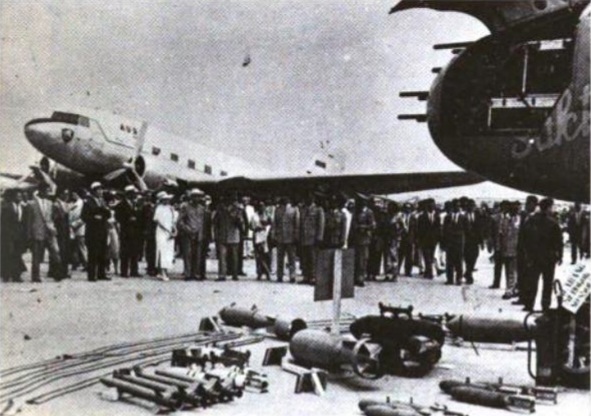
A B-26B and its armaments on display during the Air Force Day on 9 April 1963 (TNI-AU 1977:242)
Opalm bomb used on the OV-10F Bronco. The B-26B Invader could also carry these napalm bombs
A Soviet OFAB-250 bombs modified by the Air Force Research and Development Service so it could be carried by B-26B and OV-10F. (Subroto 2005:260)
Inside the bomb bay of B-26B monument in Surabaya, with two Mk 82 bombs and an additional removable fuel tank
Underwing hardpoints for Hispano-Suiza and HVAR rockets of Surabaya B-26
Underwing hardpoints for Hispano-Suiza rockets, bombs, and gunpods of Yogyakarta B-26
Hagedorn & Hellström 1994:88
Subroto 2005:200
Subroto 2005:201
Subroto 2005:202
Tim Subdisjarah Dispenau 2019:122
Images
Spoiler


B-26B during the Gala Yudha ABRI 1969 joint exercise




Derelict B-26B at the Abdulrachman Saleh Airbase, Malang, East Java on 20 August 2001
Images of preserved aircraft (Warning: photo dump)
If you have any inquiries or info to add, feel free to message me here or via DM. Thank you for visiting this suggestion!
Information Sources
Djati, Poengky Poernomo; et. al. 2001. Perjuangan AURI dalam Trikora. Jakarta: Markas Besar Tentara Nasional Indonesia Angkatan Udara.
Hagedorn, Dan; Hellström, Leif. 1994. Foreign Invaders: The Douglas Invader in foreign military and US clandestine serivce. Leicester: Midland Publishing Limited. ISBN 1-85780-013-3
Subroto, Hendro. 2005. Operasi Udara di Timor Timur. Jakarta: Pustaka Sinar Harapan. ISBN 979-416-837-8
Thompson, Scott. 2002. Douglas A-26 and B-26 Invader. Crowood Aviation Series. Ramsbury: The Crowood Press Ltd. ISBN 1-86126-503-4
Tim Subdisjarah Dispenau. 2019. Alat Utama Sistem Senjata TNI AU Periode Tahun 1951-1960. Jakarta: Sub-Direktorat Sejarah Dinas Penerangan TNI Angkatan Udara.
TNI-AU. 1977. Catur Windu TNI-AU 1945-1977: Sejarah Bergambar. Jakarta: Dinas Sejarah TNI Angkatan Udara. (e-book link)
https://www.hierundjetzt.ch/media/filer_public/b9/54/b9544b6d-b5f2-4c4c-95cb-7407dfa2be7a/indonesia_press_release_nylon_and_napalm.pdf
Napalm from the Alps: How the Swiss developed a lethal incendiary agent - SWI swissinfo.ch
Image Sources
DEFENSE STUDIES: Kisah Misi Rahasia TNI AU Hendak Turunkan Bom di Pangkalan Jet Tempur Musuh
Douglas B-26B Invader - History of The Indonesian Last Bomber
AIRPLANE SCALE MODELKIT: DOUGLAS A-26 Invader
TNI-AU. 1977. Catur Windu TNI-AU 1945-1977: Sejarah Bergambar. Jakarta: Dinas Sejarah TNI Angkatan Udara.
Hagedorn, Dan; Hellström, Leif. 1994. Foreign Invaders: The Douglas Invader in foreign military and US clandestine serivce. Leicester: Midland Publishing Limited. ISBN 1-85780-013-3
https://www.airhistory.net/photo/643149/M-265
